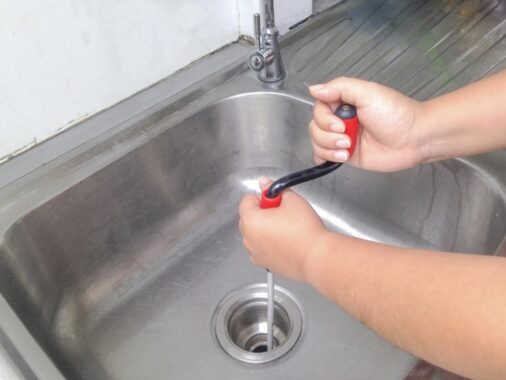Imagine a torrential downpour in a bustling city. The streets, alive with activity moments ago, are now rapidly filling up with water. Puddles form, streams run down the sidewalks, and the once dry pavements are now a maze of mini waterways. As the deluge continues, a hidden system springs into action – the stormwater management system. An unsung hero of the urban landscape, it works tirelessly behind the scenes, ensuring our streets, homes, and buildings aren’t inundated.
Stormwater management is more than just a convenience; it’s a crucial component of urban infrastructure. In the absence of an efficient stormwater system, cities and towns would face severe flooding during heavy rainfall, causing not only property damage but also posing significant risks to public safety. Uncontrolled stormwater runoff can lead to environmental issues, polluting our natural waterways with everything it picks up from the urban terrain, from oil spills to litter. As we look into understanding stormwater drain responsibilities across different Australian states, we’ll see how this system plays a pivotal role in safeguarding our cities, nature, and well-being.
What is Stormwater?
To truly grasp the intricacies of stormwater management, it’s essential to first understand what stormwater is and the journey it takes once it hits the ground. At its core, stormwater is simply rainwater. But once it lands, it embarks on a transformative journey that takes it from mere raindrops to a potential environmental challenge.
When rain falls on natural landscapes, like forests or grasslands, much of it is absorbed by the soil or taken up by plants. However, in urban environments, where natural land is replaced by hard surfaces like pavements, roads, and rooftops, rainwater doesn’t have many places to go. It can’t easily seep into the ground, so it begins to run off these surfaces, collecting whatever it encounters along the way. This can include pollutants like oils from vehicles, chemicals from industrial processes, and even litter dropped on the streets.
This runoff, now termed ‘stormwater’, then flows into a meticulously designed drainage system. The primary objective of this system is not just to prevent flooding by efficiently channeling the water away but also to protect our environment. If stormwater were allowed to directly enter rivers, lakes, or oceans without treatment, the pollutants it carries would wreak havoc on aquatic ecosystems and could even contaminate sources of drinking water.
Thankfully, with advancements in urban planning and environmental awareness, stormwater is collected by specially designed drains and is often treated. This treatment process filters out many of the pollutants, ensuring that by the time the water is released into natural waterways, it’s considerably cleaner and less harmful to the environment. It’s a delicate balance of engineering and environmental stewardship, all aimed at ensuring that our cities function harmoniously within nature.
State-wise Breakdown of Responsibilities
Australian Capital Territory
Public stormwater infrastructure in the ACT must be maintained by the government, whereas private property owners are responsible for maintaining their own private drainage systems. To avoid flooding and pollution, it’s crucial for property owners to be aware of their obligations and make sure that their systems are in working order.
New South Wales
In NSW, local councils are in charge of maintaining public stormwater infrastructure like roadside drainage systems and stormwater detention basins. Private property owners are accountable for maintaining any private stormwater infrastructure, such as drainage systems serving specific homes.
Queensland
In Queensland, local councils oversee public stormwater infrastructure maintenance. On the other hand, the upkeep of private stormwater systems, like pipes and drains specific to individual properties, lies with private property owners.
Northern Territory
In the Northern Territory, stormwater infrastructure maintenance is a shared responsibility between local councils and private property owners. Local councils are in charge of maintaining public stormwater infrastructure, such as roadside drainage systems and stormwater detention basins, while private property owners are responsible for maintaining their own private drainage systems.
South Australia
In South Australia, local councils take care of maintaining public stormwater infrastructure, including stormwater detention basins and roadside drainage systems. Stormwater infrastructure located on private land and property, such as pipes and drains that serve specific properties, has to be maintained by the relevant private owner.
Tasmania
Public stormwater infrastructure, such as stormwater detention basins and roadside drainage systems, is overseen and taken care of by local councils in Tasmania. Homeowners and property owners are required to maintain any private stormwater infrastructure, such as pipes and drains, that serve particular properties.
Victoria
The maintenance of public stormwater infrastructure, such as roadside drainage systems and stormwater detention basins, falls under the purview of local councils in Victoria. Owners of homes and properties are responsible for the upkeep of all private stormwater infrastructure, including pipes and drains that serve particular properties.
Western Australia
Public stormwater infrastructure, such as roadside drainage systems and stormwater detention basins, falls under the purview of local councils in WA. Private stormwater infrastructure, such as pipes and drains that serve specific properties, is the responsibility of homeowners.
Understanding stormwater responsibilities is crucial, not just for the well-being of our properties but also for the larger community and environment. If you’re ever in doubt about your obligations or face any issues with your stormwater system, it’s always a good idea to call a licensed plumber to ensure everything runs smoothly.






